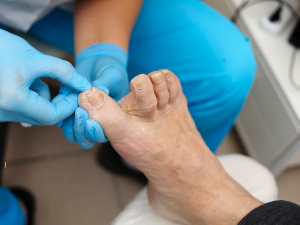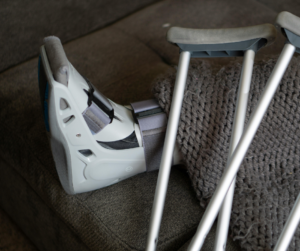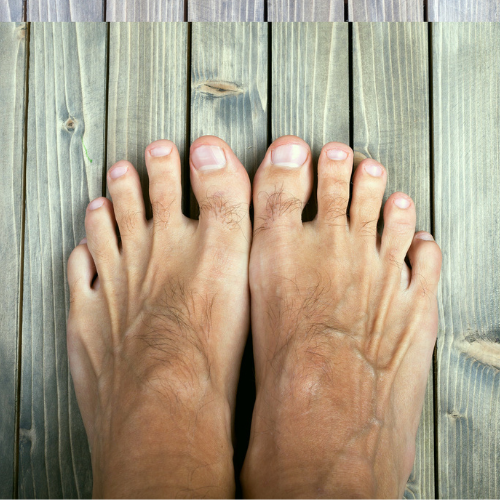Toenail fungus, medically known as onychomycosis, is a common yet often overlooked condition that can have serious implications if left untreated. This blog post will delve into the nature of toenail fungus, its causes, symptoms, and why seeking professional treatment from a trusted podiatrist is crucial for effective management. We’ll also discuss home remedies, their limitations, and preventive measures to keep your toenails healthy.
What Is Toenail Fungus?
Toenail fungus, or onychomycosis, is an infection that occurs underneath the surface of the nail caused by fungi. These tiny organisms thrive in warm, moist environments and can easily take hold in the toenails, leading to a variety of symptoms. Affected nails often become darker in color and emit a foul odor. Debris may collect beneath the nail plate, and white marks frequently appear on the nail. The infection can spread to other toenails, the skin, and even the fingernails. If ignored, the infection can impair your ability to work or walk, as the resulting thicker nails are difficult to trim and can cause pain when wearing shoes. Additionally, onychomycosis can be accompanied by secondary bacterial or yeast infections in or around the nail plate. 
Causes of Toenail Fungus
Toenail fungus is challenging to avoid due to the ubiquitous nature of microscopic organisms like fungi. Toenails are particularly vulnerable in damp areas where people are likely to walk barefoot, such as swimming pools, locker rooms, and showers. Several factors can increase the susceptibility to fungal infections, including:
- Injury to the Nail Bed: Even minor injuries or pressure from shoes can make the nail bed more susceptible to fungal infections.
- Chronic Diseases: Individuals with chronic conditions such as diabetes, circulatory problems, or immune-deficiency disorders are more prone to fungal nails.
- Athlete’s Foot History: A history of athlete’s foot can increase the likelihood of developing toenail fungus.
- Excessive Perspiration: Excessive sweating creates a moist environment that is conducive to fungal growth.
Symptoms of Toenail Fungus
Toenail fungus often goes unnoticed because it can persist for years without causing pain. However, the infection is characterized by a progressive change in the quality and color of the toenail, which can be unsightly and embarrassing. Symptoms include:
- Discoloration of the nail, often turning yellow, brown, or white
- Thickening of the nail, making it difficult to trim
- Brittle, crumbly, or ragged nail texture
- Distorted nail shape
- Foul odor emanating from the infected nail
- Debris buildup under the nail
- Separation of the nail from the nail bed
Home Treatment: Limitations and Risks
While some home remedies can temporarily suppress mild infections, they often fall short of providing a lasting solution. Common home treatments include:
- Daily Cleansing: Maintaining a daily cleansing routine over several months can help manage mild infections.
- Filing and Antifungal Agents: White markings on the nail surface can be filed off, followed by the application of over-the-counter liquid antifungal agents.
Despite these efforts, even the best over-the-counter treatments may not prevent the fungal infection from returning. Moreover, trying to treat the infection without professional guidance can lead to further complications.
When to Visit a Podiatrist
It is essential to visit a podiatrist at the first sign of toenail discoloration, thickening, or deformity. Early intervention by a professional significantly increases the chances of successfully clearing the infection. A podiatrist can detect a fungal infection early, perform necessary lab tests to determine the cause, and formulate a suitable treatment plan.

If you suspect you may have toenail fungus and you would like to schedule an appointment today with Dr. Bishop DPM, FACFAS or Dr. Rappette DPM, FACFAS, call:
Foot & Ankle Centers
Morris: (815) 942-9050
Yorkville: (630) 553-9300
Diagnosis and Treatment Options
Treatment for toenail fungus varies depending on the nature and severity of the infection. A podiatrist may recommend one or more of the following treatment options:
- Topical Medications: Prescription-strength topical treatments can be effective, especially for mild to moderate infections.
- Oral Antifungals: Oral antifungal medications, approved by the Food and Drug Administration (FDA), are often the most effective treatment. They offer a shorter treatment regimen of approximately three months and improved effectiveness.
- Debridement: This procedure involves the removal of diseased nail matter and debris from the infected nail.
- Non-Invasive Surgical Treatment: At Foot & Ankle Centers the Q-Clear Laser System is not only our safest and most effective toenail fungus treatment, but also pain free. Unlike traditional treatments that struggle to penetrate the hardy nature of the fungus residing beneath the nail, this laser system utilizes a short
 burst of laser energy to precisely target and destroy the fungus. Although topical and oral anti-fungal medications can be effective, they also carry the risk of liver damage.
burst of laser energy to precisely target and destroy the fungus. Although topical and oral anti-fungal medications can be effective, they also carry the risk of liver damage. - Surgical Treatment: In severe cases, temporary removal of the infected nail may be necessary to allow direct application of topical antifungals. Permanent removal of a chronically painful nail can cure the infection and prevent the return of a deformed nail.
Prevention: Keeping Toenail Fungus at Bay
Preventing toenail fungus involves proper hygiene and regular inspection of the feet and toes. Here are some preventive measures to consider:
- Keep Feet Clean and Dry: Wash your feet with soap and water daily, and dry them thoroughly, especially between the toes.
- Wear Shower Shoes: Always wear shower shoes in public areas such as swimming pools, locker rooms, and showers.
- Change Footwear Regularly: Change shoes, socks, or hosiery more than once daily to keep your feet dry.
- Proper Nail Care: Clip toenails straight across, ensuring the nail does not extend beyond the tip of the toe.
- Wear Breathable Shoes: Choose shoes that fit well and are made of materials that allow your feet to breathe.
- Avoid Tight Hosiery: Excessively tight hosiery can increase moisture, creating a breeding ground for fungi.
- Use Synthetic Socks: Socks made of synthetic fibers wick moisture away from your feet faster than cotton or wool socks.
- Disinfect Nail Instruments: Regularly disinfect instruments used to cut nails and home pedicure tools.
- Avoid Nail Polish on Suspected Infections: Do not apply nail polish to nails suspected of infection (e.g., those that are discolored).
- Treat Athlete’s Foot Promptly: Address athlete’s foot infections promptly to prevent the spread to toenails.
Toenail fungus is a common condition that can have significant implications if left untreated. Early intervention and professional treatment are crucial for managing the infection effectively. While home remedies may offer temporary relief, they are often insufficient to prevent recurrence.
Visiting Foot & Ankle Centers for diagnosis and treatment ensures that you receive the proper care and guidance needed to tackle toenail fungus effectively.
At Foot & Ankle Centers our podiatrists highly recommend the Q-Clear Laser System to treat toenail fungus. It is completely safe, painless, and an extremely effective treatment.
Schedule a consultation appointment with Dr. Rappette DPM, FACFAS, for the Q-Clear Laser System today!









